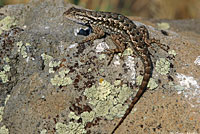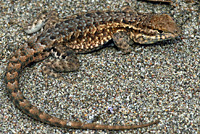
A Guide to the Amphibians
and Reptiles of California
Commonly Encountered California Lizards

| These are the lizards I am most often asked to identify, but that does not mean they will be the most common lizards in all areas. Check the following pictures first if you are trying to identify a lizard you have found in California. Because most of these lizards are often seen around houses and yards, I have received many emails asking me to identify them. For that reason I consider them to be the lizards most commonly encountered in California. Always keep in mind that any kind of lizard can vary in appearance and can look much different in motion than it does in a still photo. Sunlight and shade can also change the apparent color of a lizard, and lizards will change in color depending on their temperature. If you do not find your lizard here, try this page: Identifying Lizards Found in California - an Expanded Photo Index |
||
Southern Alligator Lizard |
||
| Most of the alligator lizards shown here are slightly coiled up to fit them in the photos, but they often look very long and thin, like a snake, when they are stretched out and when moving. Sometines a part of the tail is missing, which an make the lizard look shorter and fatter. Color can vary from brown to red to grayish. Juveniles do not look like adults - they are small, thin, and shiny with a solid coppery color on the back. They are often mistaken for small ground skinks by people who are used to seeing those skinks in the southern and eastern US, but they are a different and unrelated species. Check the Alligator Lizards page to find out which form is found in your area. |
||
 |
||
| © Yuval Helfman | ||
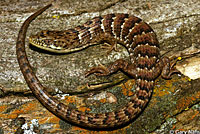 |
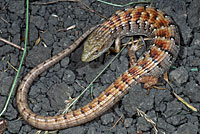 |
 |
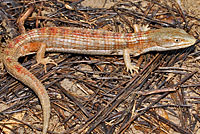 |
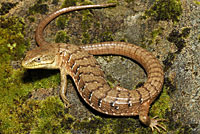 |
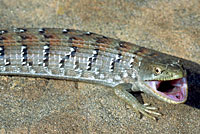 |
 |
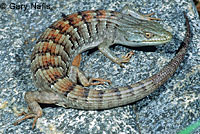 |
|
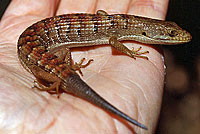 |
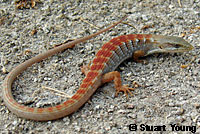 |
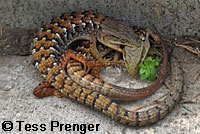 |
| This lizard has a re-grown tail | Some adults have a lot of red coloring | Males and females are sometimes seen paired up like this in April and May |
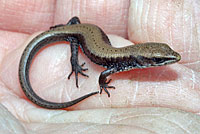 |
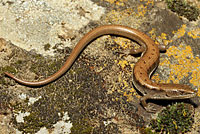 |
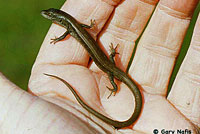 |
| Juvenile | Juvenile | Juvenile |
Western Fence Lizard |
||
| These lizards vary greatly in appearance as you can see in the pictures below. They can look spotted, striped, blotched or solid brown, and they often look very dark before they have warmed up. Chances are good if you see a small lizard sitting on a rock or fence or other object and you are anywhere in California (except the very high mountains or in the deserts) this is the lizard you are looking at. (Some exceptions are the Granite Spiny Lizard and the Side-blotched Lizard in coastal Southern California.) |
||
 |
||
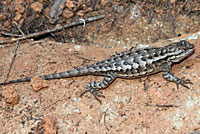 |
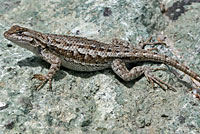 |
|
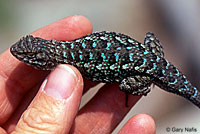 |
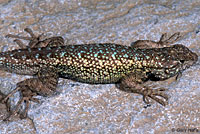 |
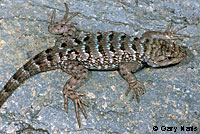 |
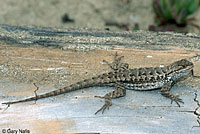 |
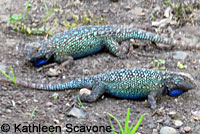 |
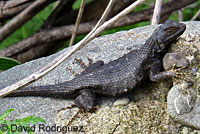 |
| Adult males sometimes appear bright blue, especially when they encounter other males during the breeding season. © Kathleen Scavone | Sometimes fence lizards are very dark before they have warmed up in the sun, like this one. They can look like they're completely black when viewed from a distance. © David Rodriguez |
|
Common Side-blotched Lizard |
||
| Also found in other open dry areas and in coastal Southern California. These are small lizards that are usually seen sitting on a rock getting some sun. Males have more color and fine spotting than females, which have larger markings on the back. Easily confused with the Western Fence Lizard, but the side-blotch lizards is smaller and doesn't have the large spiny scales found on a fence lizard. |
||
 |
||
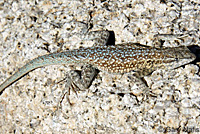 |
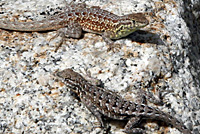 |
|
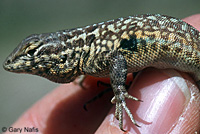 |
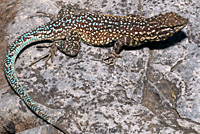 |
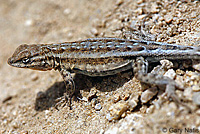 |
| Dark blotch on the side | Colorful adult male | Females sometimes looks striped |
Mediterranean Gecko |
||
| A small, nocturnal lizard with large eyes and large toes for climbing, often seen on the walls of buildings at night underneath lights where they wait to jump and catch flying insects. Has a light phase and a dark phase. |
||
 |
||
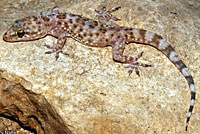 |
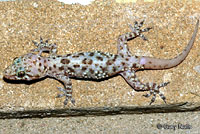 |
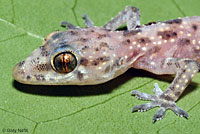 |
 |
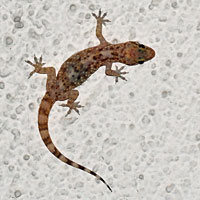 |
 |
Return to the Top
© 2000 -
